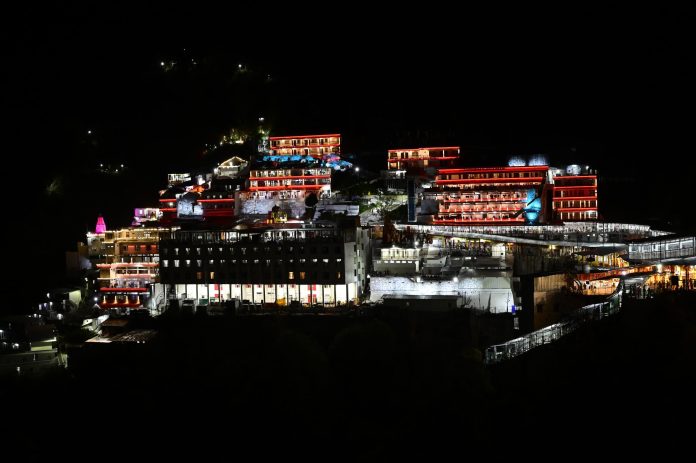The annual pilgrimage to the revered Shri Mata Vaishno Devi Ji shrine continues to attract millions of devotees, with this year’s count already touching 78.10 lakh. The recent influx of 4.5 lakh pilgrims during the Navratras alone is a testament to the enduring spiritual significance of the shrine. However, with growing numbers, there is an increased need to enhance infrastructure to ensure a seamless and safe experience for all pilgrims. In this regard, the Shrine Board has undertaken three major projects that promise to transform the pilgrimage experience over the next two years: the ropeway from Katra to Bhawan, a new medical college, and an exit track at Bhawan. Together, these developments signal a forward-thinking approach to pilgrimage management, ensuring the shrine can cater to the rising numbers of devotees while prioritising their comfort and safety. The Rs 300 crore PPP ropeway project from Katra to Bhawan, expected to be completed by October 2026, is a particularly significant addition. Pilgrims who face difficulty walking the strenuous uphill path to the shrine will find great relief in the ropeway, which promises to provide a smoother, quicker, and more comfortable journey, reducing congestion on the existing walking routes.
Equally commendable is the upcoming medical college, slated to open in June 2025 with an initial intake of 50 MBBS students. The establishment of this institution reflects the Shrine Board’s commitment to the long-term development of the region, contributing not only to healthcare but also to education and employment. Partnering with Narayana to continue running the hospital ensures that the medical needs of pilgrims and locals will remain in capable hands. The construction of a dedicated exit track at Bhawan, costing Rs 25 crore, is another thoughtful initiative decongesting the pilgrimage site. The 200-meter-long exit route, expected to be completed by December 2025, will help ensure smoother crowd movement, especially during peak pilgrimage seasons, reducing the risk of stampedes or other safety hazards. Together, these projects demonstrate the SMVDSB’s proactive approach to addressing the growing demands of the pilgrimage.


